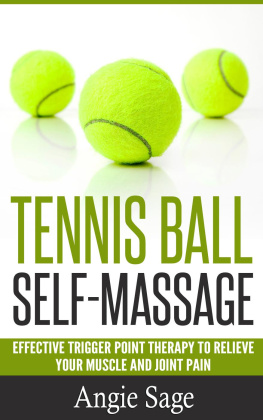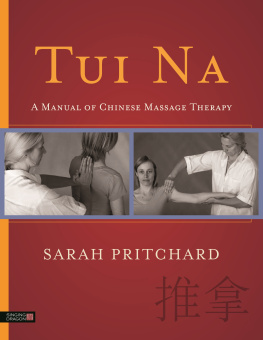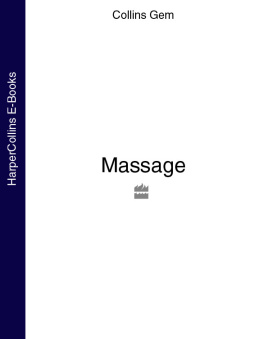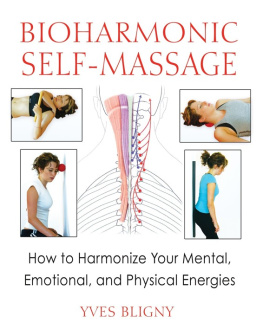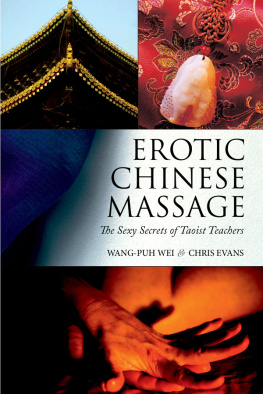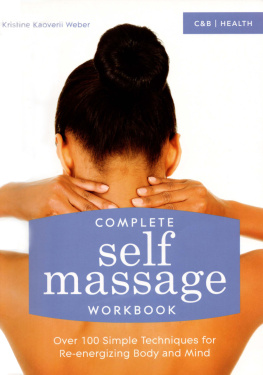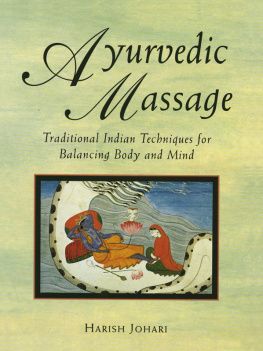Maria Mercati - The Tui Na Manual: Massage to awaken body and mind
Here you can read online Maria Mercati - The Tui Na Manual: Massage to awaken body and mind full text of the book (entire story) in english for free. Download pdf and epub, get meaning, cover and reviews about this ebook. year: 2018, publisher: Eddison Books Ltd, genre: Home and family. Description of the work, (preface) as well as reviews are available. Best literature library LitArk.com created for fans of good reading and offers a wide selection of genres:
Romance novel
Science fiction
Adventure
Detective
Science
History
Home and family
Prose
Art
Politics
Computer
Non-fiction
Religion
Business
Children
Humor
Choose a favorite category and find really read worthwhile books. Enjoy immersion in the world of imagination, feel the emotions of the characters or learn something new for yourself, make an fascinating discovery.

- Book:The Tui Na Manual: Massage to awaken body and mind
- Author:
- Publisher:Eddison Books Ltd
- Genre:
- Year:2018
- Rating:3 / 5
- Favourites:Add to favourites
- Your mark:
- 60
- 1
- 2
- 3
- 4
- 5
The Tui Na Manual: Massage to awaken body and mind: summary, description and annotation
We offer to read an annotation, description, summary or preface (depends on what the author of the book "The Tui Na Manual: Massage to awaken body and mind" wrote himself). If you haven't found the necessary information about the book — write in the comments, we will try to find it.
The Tui Na Manual: Massage to awaken body and mind — read online for free the complete book (whole text) full work
Below is the text of the book, divided by pages. System saving the place of the last page read, allows you to conveniently read the book "The Tui Na Manual: Massage to awaken body and mind" online for free, without having to search again every time where you left off. Put a bookmark, and you can go to the page where you finished reading at any time.
Font size:
Interval:
Bookmark:


To my loving family: Trevor, Gisela, Gina, Graham, and Danella

A NOTE FROM THE AUTHOR
I discovered Tui Na during my own personal quest for a therapy to relieve crippling pain. As a child I suffered from a degenerative disease that affected my hip. While living in Indonesia for four years, I discovered the healing powers of deep oriental massage, and trained as a massage therapist. As the years went by, standing and walking even for short distances caused me pain. In 1987, Western medicine could only offer me painkillers and a hip replacement operation. But instead of going to hospital for surgery, I travelled to China to learn Tui Na. The skilful, patient doctors of traditional medicine gave me the treatment and tuition that I needed and opened a wonderful new chapter in my life.
At that time, few people in the West had heard of Tui Na, although acupuncture and herbal medicine were available. So extraordinary was Tui Na's effect on me, it became my mission in life to bring it within the reach of everyone in the West. I studied, worked and travelled back to China time and again to learn Tui Na and acupuncture from Chinese doctors in hospitals and clinics in Shanghai, Weihai, Xian, Beijing and Jinan.

In response to a growing interest in Tui Na and acupuncture, I established the teaching side of the BODYHARMONICS Centre, where we run regular training courses. Over the decades, I have trained hundreds of students in Tui Na and acupuncture (www.bodyharmonics.co.uk ).
I have treated many people with disabling conditions where other forms of medicine could do little to help and have found that there is a real alternative to living on painkillers or having surgery. Tui Na has changed my life and the lives of many of my patients, and also my students and their patients. I hope that it can do the same for you.

AUTHOR'S ACKNOWLEDGEMENTS
I owe a debt of gratitude to the Chinese doctors of the traditional Chinese hospitals of Shanghai, Weihai, Xian and Jinan, who have most generously and patiently taught me the theory and practice of Tui Na.
My thanks also go to my husband Trevor for the enjoyable hours of discussion and brainstorming involved in preparing this book, and to my daughters Gisela, Gina and Danella, my son Graham, Jamie Dawkins, Neal Wickens and my grandchildren Oscar, Claudia and Rosa for patiently and skilfully modelling for most of the photographs and being excellent ambassadors for Tui Na. I would like to give a special thanks to Darren Tucker for patiently correcting all qi-points and meridians.
HOW TO USE THIS BOOK
The Tui Na Manual provides a comprehensive introduction to the use of this ancient healing art of deep massage and manipulation. Accessible for readers who have no previous experience of massage therapies, its clear approach is also valuable for those trained in other forms of bodywork, or in traditional Chinese medicine.
Chapters 1 and 2 describe the unique features of Tui Na and explain its roots in the 4,000-year- old system of traditional Chinese medicine. These chapters give important background information for the more practical techniques that follow in the remaining chapters.
Chapter 3 uses illustrations and descriptions to show the energy pathways in the body, and the points where this energy can be manipulated. You need to familiarize yourself with these and practise the Tui Na techniques for soft tissue massage and joint manipulations described in chapter 4, before going on to giving the treatments described in the final two chapters.
The whole-body routine in chapter 5 is a unique holistic treatment, developed by the author. In China, there is no specific routine; only techniques for healthcare and health conditions. Focusing on each part of the body in turn, it restores balance in the bodys energies, for health and well-being in body, mind and spirit. Once you have mastered the techniques and learned how to give the whole-body treatment, you can modify it, if necessary, to meet your partner's needs.
Chapter 6 presents treatments for a variety of common conditions and ailments. One section is devoted to sports injuries, such as sprains and muscle strains, which can be treated very successfully using Tui Na. There are also treatments appropriate for infants, adolescents and the elderly.
Tui Na is part of a medical system of healing, and for accuracy its techniques and applications have to be explained using medical anatomical terms. These are explained in the Appendix, which includes diagrams of the bones and muscles in the body, and the Glossary.
Many anatomical terms, such as the names of the organs of the body, and bodily fluids, such as blood or phlegm, have a wider meaning in Chinese medicine than they do in the West (see ), and this meaning is implicit in the use of these terms throughout this book.
NOTE ON SAFETY
The techniques and treatments in this book are to be used at the reader's sole discretion and risk. Always observe the cautions given, and consult a doctor if you are in any doubt about a medical condition.
Tui Na is very safe when performed according to the advice given in this book. One of its major applications is in relieving pain, but it can also be used to treat a wide range of common ailments. As with any form of deep massage, there are certain contraindications, which are given . Some of the treatments should not be used during pregnancy; wherever this is the case, the treatments are highlighted with a caution.
THE PROMISE OF TUI NA
Tui Na massage is one of the ancient healing arts of traditional Chinese medicine (also referred to in this book as TCM), along with acupuncture and herbal medicine. The earliest writings on Chinese medicine are in the Nei Ching, translated as The Yellow Emperors Classic of Internal Medicine, dating back to around 2300 BCE. The Nei Ching, a monumental treatise, includes several chapters on massage.
Although Tui Na has been practised in China for more than 4,000 years, and is available today in many hospitals and clinics throughout that country, it is only now becoming known in the West. The name, Tui Na, comes from Chinese and conveys the vigorous nature of this hands-on healing system: Tui means push and Na means grasp. The Chinese script on the opposite page means Tui Na. Tui Na as practised in China treats conditions that in the West would require an osteopath, chiropractor, physiotherapist or sports therapist. Unlike these techniques, it works not only on the muscles and joints but also at a deeper level, affecting the flow of vital life energy in the body. In Chinese theory, this life energy is called qi (pronounced chee). Qi is the activating energy for all life processes. In the body, qi flows in clearly defined energy currents. These are called meridians or channels and they carry qi to all the organs and tissues of the body. The concept of qi and the meridian system is explained in more detail in chapters 2 and 3.
Next pageFont size:
Interval:
Bookmark:
Similar books «The Tui Na Manual: Massage to awaken body and mind»
Look at similar books to The Tui Na Manual: Massage to awaken body and mind. We have selected literature similar in name and meaning in the hope of providing readers with more options to find new, interesting, not yet read works.
Discussion, reviews of the book The Tui Na Manual: Massage to awaken body and mind and just readers' own opinions. Leave your comments, write what you think about the work, its meaning or the main characters. Specify what exactly you liked and what you didn't like, and why you think so.

